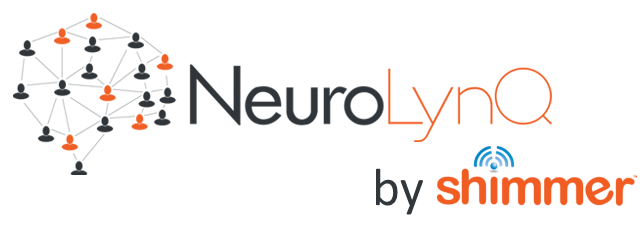Understanding Live Rugby League Stadium Experience and its Impact on Advertising
NeuroSpot used NeuroLynQ to measure emotional reactions of fans during a Rugby League game in New Zealand. In particular they explored how team sponsorship impacts their brand association with fans.
As part of this study, 20 Vodafone Warriors fans were asked to watch the game from a media box at Mt Smart Stadium. Throughout the game, NeuroSpot was able to measure second-by-second fluctuations in fan emotion - and identify what caused it.
Audience Reactions to key Brexit Politicians
Shimmer Research and Bellwether Citizen Response teamed up using NeuroLynQ to tap into voters’ deepest sentiments on Brexit. An audience of 30 persons were exposed to 11 different Brexit figures discussing various issues related to Brexit. NeuroLynQ captured GSR and ECG data to measure the audience's emotional reactions to each figure.
The findings give great insight into how positive and negative framing of messages can impact emotional responses in a political sphere.
Measuring Emotional
Responses to a Live
Concert
Palaver Strings, the Music Ensemble in Residence at the Boston Center for the Arts (BCA), wanted to evaluate its approach scientifically to the importance of context to live performance by monitoring a live performance and enlisted Shimmer’s NeuroLynQ platform to perform the study.
NeuroLynQ collected galvanic skin responses (GSR) from the participants – both audience members and performers – and measured their psychological arousal continuously during the performance.
This leads to some very interesting findings which you can read more about here.
Thanks to NMSBA and INsights for this feature.
Google generates highest emotional engagement from Super Bowl LIII Ads
Following on from the success of Super Bowl LII, Ipsos once again employed Shimmer’s NeuroLynQ platform to measure the emotional engagement of football fans. 37 participants were gathered for a Super Bowl party and fitted with NeuroLynQ sensors which passively captured their Galvanic Skin Response (GSR) throughout the viewing of the game and of course the all important Super Bowl commercials.
Following the game the NeuroLynQ software quickly kicked into action and within minutes was able to decode which ads had the strongest impact.
You can read more about this study and find out which big brands best captured the emotional engagement of the participants by clicking below.
IPSOS SUPERBOWL
Real-time, live GSR metrics from 45 people were monitored throughout the Super Bowl for IPSOS. This significant, first of its kind study allowed them to measure in real time, the nonconscious response of the audience to every commercial throughout the game and rank the different ads according to their proprietary Super Score. Key to the study was the real-time analysis which allowed them to be first to market with their analysis within hours of the game finishing. A Tide Ad was found to generate the largest response. See IPSOS Press Release here.
SHIMMER’S FAVORITE SUPER BOWL COMMERCIALS
We gathered the Shimmer team to watch the best and the worst of 2017's Super Bowl Commercials to test the emotional response of an audience to advertising.
PEABODY ESSEX MUSEUM
Peabody Essex Museum (PEM), a leading art and history museum, is using NeuroLynQ Mobile in a series of studies to understand how visitors interact with their art exhibits with the ultimate goal of improving the visitor experience. Participants walk through the museum wearing the Mobile NeuroLynQ. They can walk freely and unattended, making the study seem very natural to the participant. Depending on the study, visitors may interact with different prompts or even smart phone apps. The biometric responses and the videos are analyzed to provide both nonconscious and behavioral responses. Check out this video here to learn more.
GfK/Shimmer World Cup Study
GfK and Shimmer studied 42 people live during the France-Peru World Cup game, including 21 ads during halftime and immediately before the game. The findings included:
- Overall, humorous ads trigger greater conscious and unconscious response than ads themed around athletics, product features or emotional pull, when screened around a big sporting event
- For the sports-themed ads, the best response was gained by those with lots of dynamic interaction between athletes, which showed faces of the athletes, not their backs, and including cheering or shouting
- Ads featuring products or product benefits triggered lower conscious and unconscious response, with clear indications of a disconnection between the ads’ tone (product focus, business-like) and the audience mindset (anticipation, excitement, having fun)
For more info on the findings see the GFK blog piece here, while this video here shows a real time trace of how the audience reacted to a particular Ad.
Product Concept Testing
21 people were shown 4 TV ads and 10 product concepts, followed by a focus group discussion – all in a single session in less than an hour. Both biometric and qualitative input was received. Biometrics provided quantitative results on all the content and qualitative input was integrated in the analysis.
Can Viewing Landscape Paintings Reduce Stress?
The pandemic has exponentially worsened the emotional health of individuals across the board, from stress-filled environments for front-line workers and employees of essential industries, to housebound elderly, educators teaching on-line, and students learning from home. Nature exposure has been associated with stress-reduction, but can landscape paintings—a nature surrogate—deliver the same effect?











